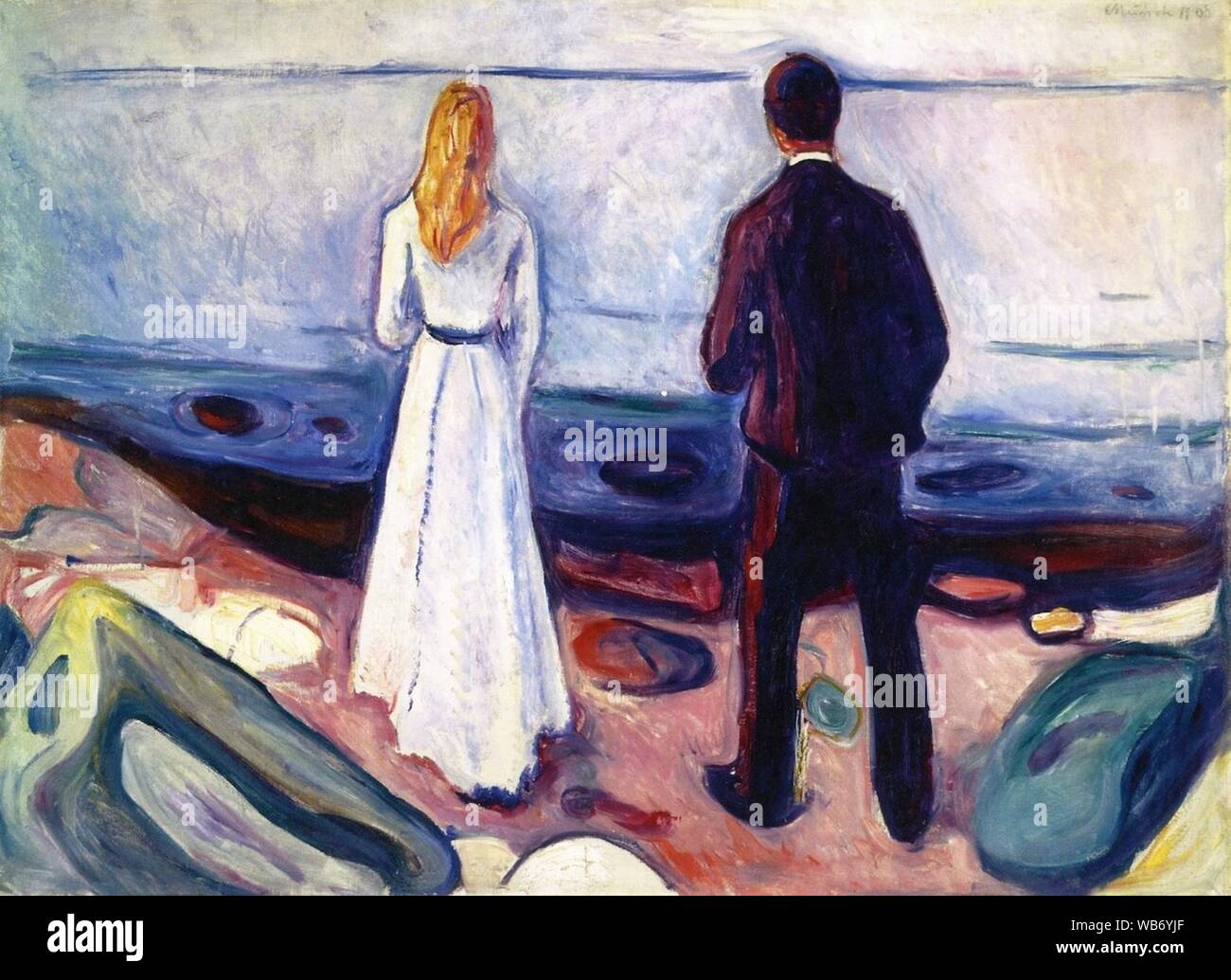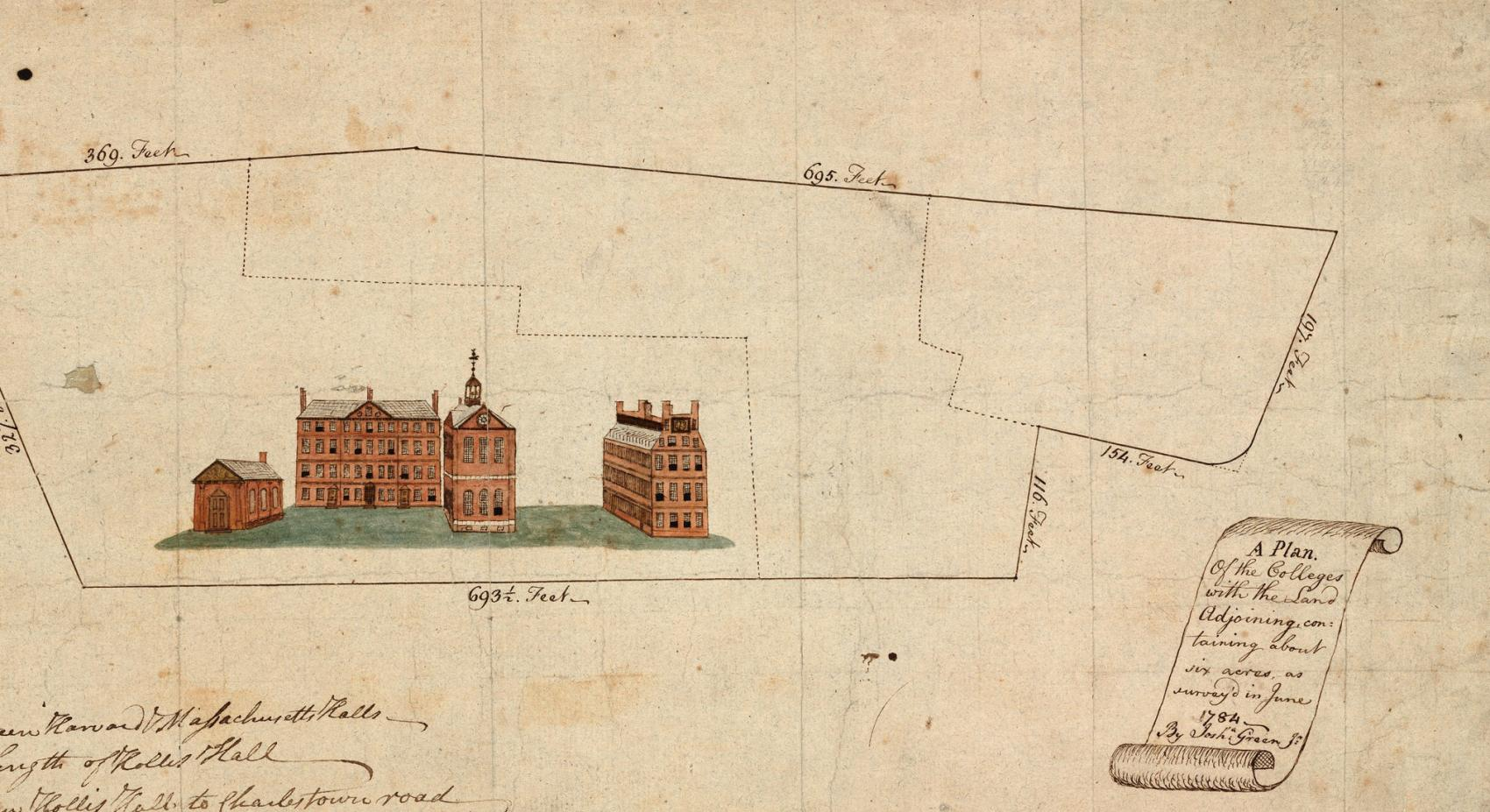Edvard Munch’s “Two Human Beings (The Lonely Ones),” painted between 1906 and 1908, captures the profound essence of solitude and connection amidst the ocean’s vastness. This hauntingly beautiful artwork, part of the esteemed collection at the Harvard Art Museums, showcases Munch’s versatile brush strokes and intricate emotional depth that has fascinated art lovers for decades. The figures depicted— a man and a woman at the shoreline— encapsulate themes that resonate within modern art exhibitions, reflecting the artist’s ongoing exploration of human relationships and isolation. Munch’s relentless reimagining of this motif across 40 years, including various printmaking techniques, adds layers of complexity to this iconic piece. As you delve into the nuances of “Two Human Beings,” you’ll discover the rich interplay between loneliness and companionship that defines Munch’s legacy.
Exploring the works of Edvard Munch, particularly the piece known as “The Lonely Ones,” offers insight into the artist’s intricate relationship with themes of isolation and connectivity. This painting, along with Munch’s innovative approaches to printmaking and his dynamic presence in modern art exhibitions, exemplifies a thorough investigation of emotional landscapes. By analyzing Munch’s repeated focus on a pair of figures poised at a shoreline, we can unlock deeper interpretations that go beyond mere solitude. His art captivates viewers with its ability to blend intense feelings of companionship with the overarching existential reflections of the human condition. As we examine these themes, we appreciate Munch’s genius not only as a painter but also as a pioneer of expressive art forms.
Understanding Edvard Munch’s Obsession with Two Human Beings
Edvard Munch’s creative journey with “Two Human Beings (The Lonely Ones)” exemplifies his deep and complex relationship with human emotion and connection. Over a period spanning more than 40 years, Munch became fixated on this motif, representing a man and woman standing on a desolate shoreline, symbolizing both companionship and isolation. This repeated exploration is significant, as it not only showcases Munch’s evolving artistic techniques but also his insights into the nature of relationships. Each iteration of the painting offers viewers a new lens through which to understand human connection, reflecting a mix of psychological depth and artistic experimentation.
At the Harvard Art Museums, this obsession is showcased prominently, where Munch’s works are displayed in various mediums including oil paintings, etchings, and woodcuts. Curators have pointed out that while at first glance, these figures appear isolated, closer inspection reveals a rich dialogue between them and the natural landscape. This connection highlights Munch’s ability to transcend mere representation and provoke deeper contemplation regarding the intersections of loneliness and companionship. As viewers engage with Munch’s masterful use of color and texture, they may find themselves reflecting on their own experiences of connection.
The Artistic Techniques Behind Munch’s Two Human Beings
Munch’s technique in creating different versions of “Two Human Beings” involves a fascinating interplay between painting and printmaking. By employing innovative methods such as jigsaw printing, Munch was able to explore variations in composition and color, unlocking a new dimension of creativity. This technique allowed him to manipulate the figures, integrating the male subject into the landscape while maintaining a distinct, almost doll-like quality for the female figure. The visibility of imprecise lines and flawed strokes not only challenges traditional notions of artistic perfection but also reflects Munch’s belief that the beauty of art lies in its imperfections.
This experimental spirit is a hallmark of Munch’s legacy, as he often favored spontaneity and dynamic brushwork over meticulous detail. The layering of paints, scrapes of color, and untouched canvas create vibrancy and energy within the artwork, inviting viewers to experience movement and emotion in a way that rigid realism cannot. Munch’s willingness to embrace flaws emphasizes his understanding of the human condition, allowing audiences to connect with the raw emotions he sought to convey. His approach sets a foundation for modern art exhibitions, inspiring artists to explore new methods that challenge viewers to reconsider their perceptions of art.
Loneliness and Companionship in Munch’s Art
While Edvard Munch’s “Two Human Beings” has often been interpreted as a poignant commentary on loneliness, a closer analysis reveals the nuances of companionship inherent in the work. The figures, although appearing distant, share a profound connection that speaks to the complexities of human relationships. This duality offers a rich canvas for interpretation, illustrating that solitude does not always equate to disconnection. Curator Lynette Roth articulates that rather than an embodiment of despair, Munch’s work could represent companionship and contemplation as significant emotional experiences that exist alongside individuality.
In contemporary discussions about relationships, Munch’s figures resonate with modern audiences who experience a similar juxtaposition of isolation even in shared spaces. His art invites viewers to ponder the nature of connection amidst the backdrop of an expansive landscape, emphasizing how personal and shared experiences can coexist. As a pivotal figure in modern art, Munch leads us to consider how his findings in art reflect broader societal sentiments about love, isolation, and the human psyche, making “Two Human Beings” a timeless exploration of these themes.
Edvard Munch and the Evolution of Printmaking
Edvard Munch’s significance in the realm of printmaking is monumental, as he revolutionized an art form that had historically played a secondary role to painting. His technique in creating prints, particularly of “Two Human Beings,” highlights his innovative approach to art making, merging the two disciplines in a unique dialogue. By dissecting his compositions into distinct pieces for printing, Munch engaged in an alchemical process of reassembly that not only gave life to new color variations but also added layers of meaning that challenge the viewer’s experience each time.
Moreover, Munch’s adaptability in exploring various mediums, from woodblock prints to etchings, underscores his artistic versatility. This fluidity allowed him to transcend conventional boundaries of artistic expression, making each work an investigation of emotion and technique. The interplay of processes links Munch’s printed works to his paintings, as he sought to capture the essence of human connection through variations in form and color. The Harvard Art Museums showcase this evolution, proving Munch’s role as an essential artist who bridged traditional art forms with modern sensibilities.
The Role of Color in Munch’s Two Human Beings
Color in Edvard Munch’s work, particularly in “Two Human Beings (The Lonely Ones),” serves as a powerful vehicle for emotional expression. Munch’s careful selection of hues not only delineates the figures but also evokes the atmosphere of the painted scene. Shades of blue and violet dominate the landscape, creating a cool and somber mood that parallels the existential themes of the painting. Conversely, bursts of warmer tones throughout his prints alter the emotional landscape, illustrating the versatility of color in communicating varied feelings and responses.
Munch’s ability to manipulate color demonstrates his keen understanding of its psychological impact. The way he uses color to enhance the sense of isolation or connection between the figures breathes life into his themes. In some versions, the colors create a sense of unity, like a shared emotional space, while in others, they emphasize the partition between the couple, making the viewer contemplate the tension in their relationship. This complex interplay of color is crucial to understanding Munch’s artistic vision and his influence on the modern art movement, echoing in contemporary practices where color remains a fundamental element of expression.
Munch’s Legacy: Influences on Modern Art Exhibitions
Edvard Munch’s work, particularly pieces like “Two Human Beings,” has left a lasting legacy on the modern art scene, influencing countless artists and shaping art exhibitions worldwide. As curators and institutions recognize the depth of Munch’s exploration of the human condition, they continue to incorporate his works into their collections and exhibitions. This ongoing interest reflects a broader appreciation for artists who delve into the complexities of emotion and experience, paving the way for contemporary dialogues on mental health, intimacy, and connection.
Modern art exhibitions frequently highlight Munch’s innovative techniques, encouraging young artists to draw inspiration from his melding of traditional practices with new methods. The techniques Munch used—such as those seen in printmaking and painting—challenge artists to experiment boldly, pushing the envelope of how they convey emotional narratives. Themes of isolation, companionship, and the human psyche are prevalent today, making Munch’s artistic inquiries not just relevant but essential to understanding our modern existence.
Interpretations of Loneliness in Munch’s Work
The theme of loneliness in Munch’s “Two Human Beings” is frequently discussed, as it takes center stage in interpretations of this poignant motif. The figures’ positioning, facing away, evokes a shared yet solitary experience, prompting viewers to explore the psychological implications of being physically close but emotionally distant. Munch’s portrayals challenge the notion that being with another person automatically mitigates feelings of isolation, paving the way for discussions about the complexities of intimacy and personal experience.
However, recent analyses provide alternative perspectives on this interpretation, suggesting that Munch’s figures may not be as detached as they appear. Curatorial insights indicate that these figures are deeply intertwined with their surroundings; the colors and shapes blend to create a sense of connection rather than separation. This evolving understanding encourages viewers to reflect on their perceptions of loneliness, companionship, and the subjective nature of emotional experiences, enhancing the ongoing dialogue surrounding Munch’s legacy and its relevance in contemporary contexts.
Bringing Munch’s Art to New Audiences
The exhibition “Edvard Munch: Technically Speaking” at the Harvard Art Museums represents a pivotal move towards making Munch’s art accessible to broader audiences. By showcasing not just the paintings but also the prints and his innovative processes, curators aim to illustrate the complexity of his artistic journey. This initiative encourages engagement and reflection, inviting visitors to explore Munch’s techniques and themes beyond the traditional confines of art appreciation.
Moreover, modern exhibitions are increasingly focusing on educational programming that helps to contextualize Munch’s work within contemporary issues, such as mental health and emotional resilience. By drawing connections between Munch’s experiences and those of today’s viewers, these initiatives foster deeper understanding and appreciation of his art. This engaging approach aids in bridging the gap between Munch’s historical significance and his enduring impact on the modern art narrative, making his works resonate with new generations in meaningful ways.
The Emotional Landscape of Munch’s Art
The emotional landscape painted by Edvard Munch in works like “Two Human Beings” reflects the intricacies of human experience. Through his unique blend of color, form, and technique, Munch captures complex emotional states, allowing viewers to engage with the depth of human feelings such as sorrow, joy, and contemplation. This ability to articulate the often turbulent inner experiences of his subjects speaks to Munch’s mastery as an artist and his understanding of the human condition.
In examining Munch’s artistic approach, it becomes clear that he utilized not just the mechanics of art but also an emotional vocabulary that resonates deeply with audiences. Each brushstroke, color choice, and composition invites interpreters to relate personal experiences with those captured on the canvas. This emotional connectivity ensures that Munch’s work remains relevant, as viewers continue to seek understanding and reflection in his art, bridging generational gaps and cultural differences.
Frequently Asked Questions
What is the significance of Edvard Munch’s painting ‘Two Human Beings (The Lonely Ones)’?
‘Two Human Beings (The Lonely Ones)’ is significant as it embodies Edvard Munch’s decades-long exploration of themes such as isolation, companionship, and the human condition. Painted between 1906 and 1908, and mastered with various techniques, this painting showcases Munch’s ability to express complex emotional states through the imagery of a man and woman at the shore, facing away from the viewer.
How did ‘Two Human Beings (The Lonely Ones)’ influence Edvard Munch’s printmaking techniques?
The motif of ‘Two Human Beings (The Lonely Ones)’ had a profound impact on Edvard Munch’s printmaking techniques. Munch employed a jigsaw method in creating woodblock prints of this theme, allowing him to explore various color combinations and configurations. This interplay between painting and printmaking demonstrates Munch’s innovative approach to artistic expression and his dedication to the motif over years.
Where can I view Edvard Munch’s ‘Two Human Beings (The Lonely Ones)’?
You can view Edvard Munch’s ‘Two Human Beings (The Lonely Ones)’ at the Harvard Art Museums. This artwork is part of the exhibition titled ‘Edvard Munch: Technically Speaking,’ which includes a diverse collection of Munch’s works, highlighting his techniques and thematic explorations.
What elements of ‘Two Human Beings (The Lonely Ones)’ indicate Edvard Munch’s artistic style?
Edvard Munch’s artistic style in ‘Two Human Beings (The Lonely Ones)’ is characterized by emotive brushwork, vibrant color schemes, and a deliberate balance between detailed areas and unpainted canvas. These elements reflect Munch’s modern art sensibilities, emphasizing emotional resonance and psychological depth in his portrayal of the human figures.
What do the figures in Edvard Munch’s ‘Two Human Beings (The Lonely Ones)’ symbolize?
The figures in ‘Two Human Beings (The Lonely Ones)’ symbolize the complex nature of human relationships, particularly feelings of connection and isolation. While they appear together at the shoreline, their body language and posture suggest a sense of detachment, embodying themes of companionship and personal contemplation that Munch frequently explored throughout his career.
What artistic techniques did Edvard Munch use in ‘Two Human Beings (The Lonely Ones)’?
In ‘Two Human Beings (The Lonely Ones),’ Edvard Munch employed various artistic techniques including thick application of paint, unpainted areas, and gestural lines that contribute to the dynamism of the figures. This exploration of texture and form reveals Munch’s innovative approach to capturing emotional intensity in his artwork.
How does ‘Two Human Beings (The Lonely Ones)’ reflect Edvard Munch’s views on loneliness?
‘Two Human Beings (The Lonely Ones)’ reflects Edvard Munch’s nuanced views on loneliness by capturing a moment where two figures coexist yet remain emotionally distant. The artwork suggests that isolation can occur even in the presence of another, inviting viewers to contemplate the various dimensions of human connection and solitude that Munch often depicted in his body of work.
What influenced Edvard Munch’s repeated depictions of ‘Two Human Beings’?
Edvard Munch’s repeated depictions of ‘Two Human Beings’ were influenced by his personal experiences, artistic experimentation, and evolving techniques over decades. His relentless exploration of this motif allowed Munch to delve into varying emotional landscapes, each iteration revealing different aspects of companionship, isolation, and existential reflection.
| Key Element | Description |
|---|---|
| Title of Artwork | Two Human Beings (The Lonely Ones) |
| Artist | Edvard Munch |
| Creation Date | 1906-1935 (multiple iterations) |
| Medium | Oil on canvas |
| Exhibition Location | Harvard Art Museums |
| Theme | Isolation, companionship, and the exploration of artistic techniques |
| Artistic Techniques | A mix of thick paint application, unpainted areas, and variations in color through prints |
Summary
Edvard Munch’s “Two Human Beings” delves into the complexities of human connection and isolation. Through the lens of over 40 years of artistic exploration, Munch presents a profound commentary on companionship and solitude, depicted by the contrasting figures at the shoreline. This famous motif invites us to reflect on the nuances of relationships and the emotional landscapes they inhabit. Munch’s innovative techniques in painting and printmaking reveal not only his artistic versatility but also a deep engagement with the themes of human existence. Ultimately, “Two Human Beings” stands as a testament to Munch’s legacy as a pivotal figure in Modernism, captivating viewers with its enduring relevance.




